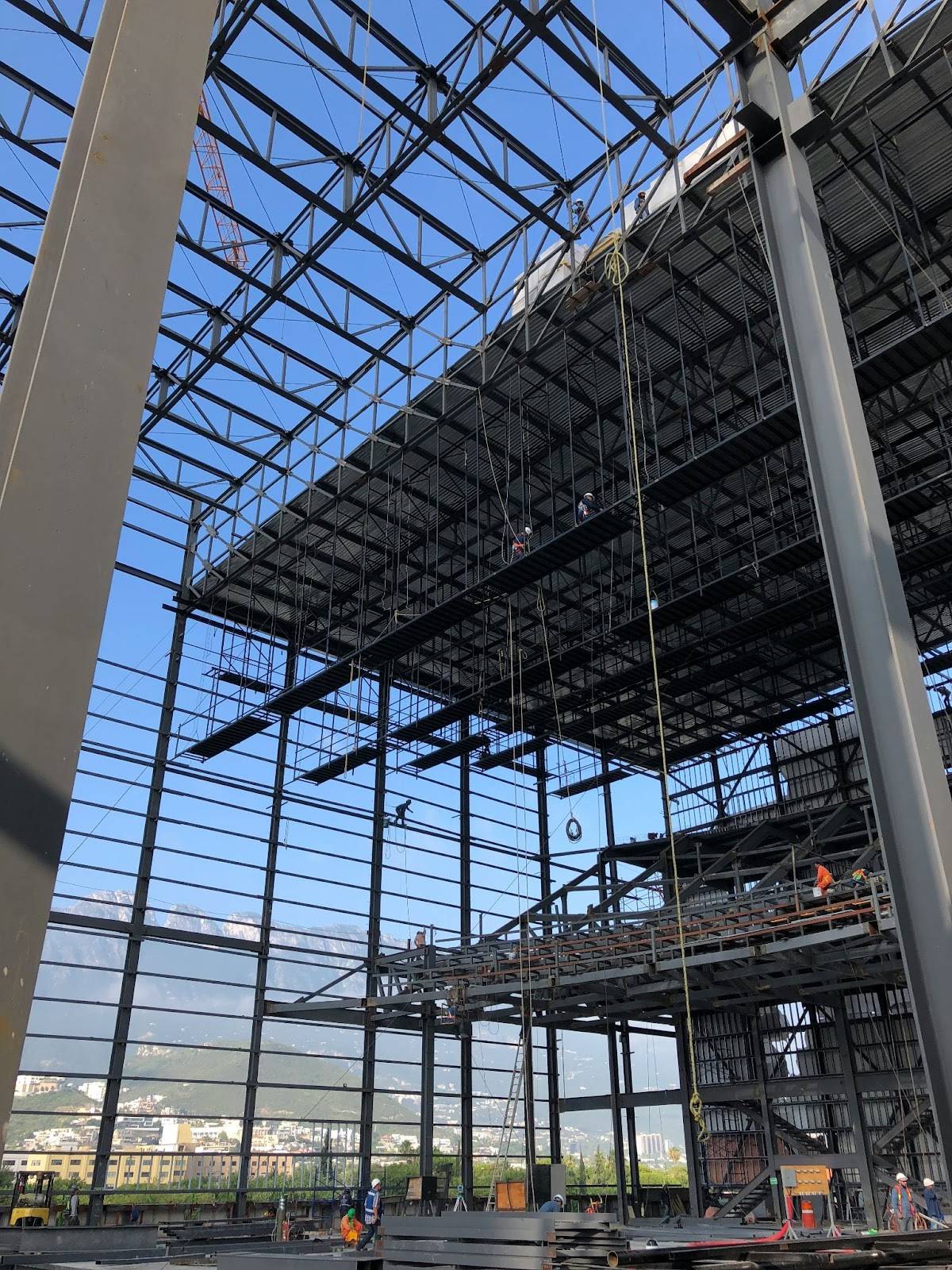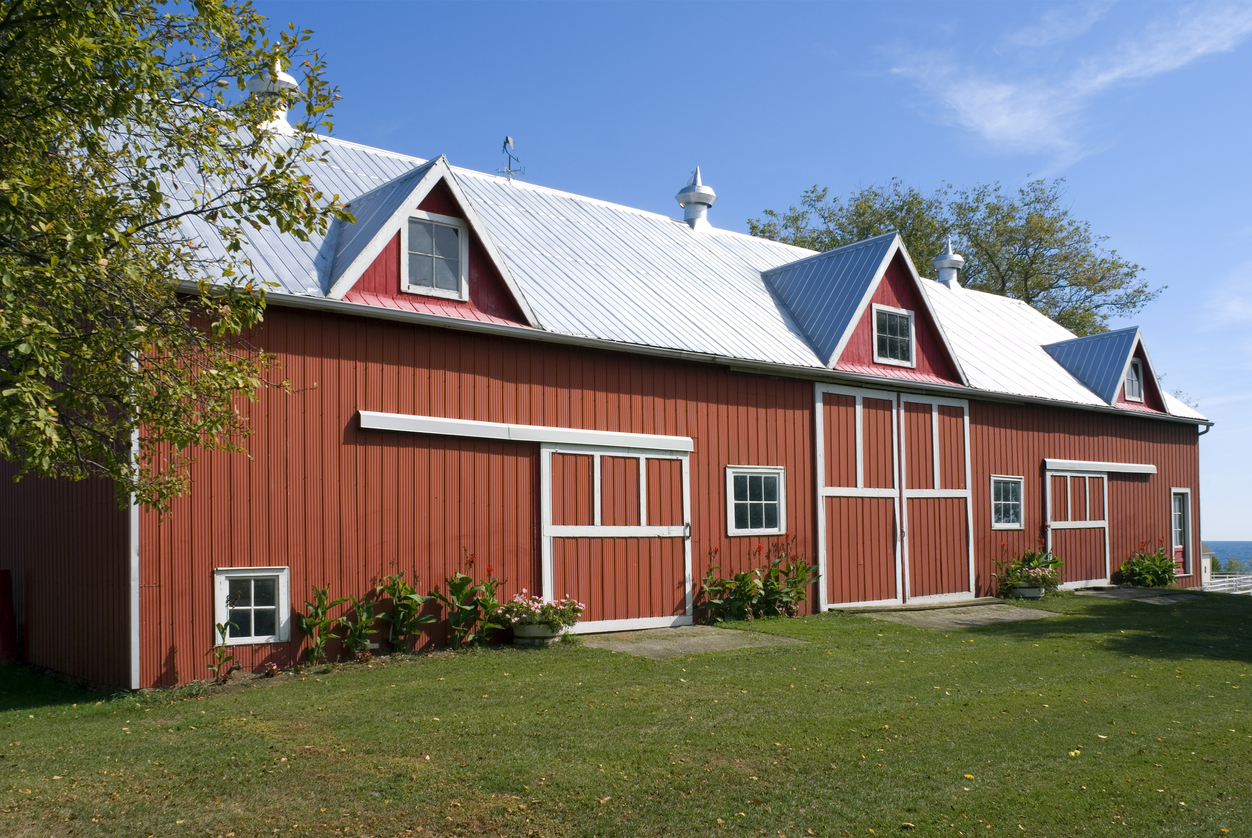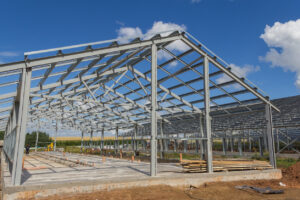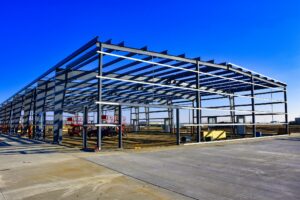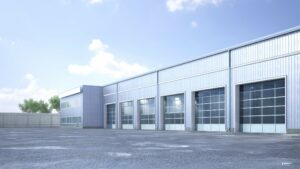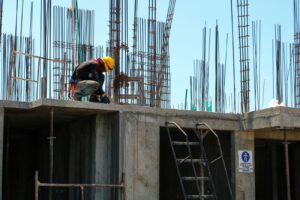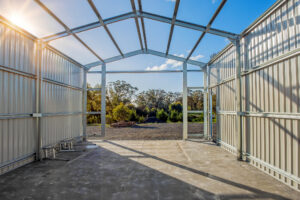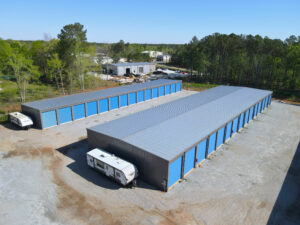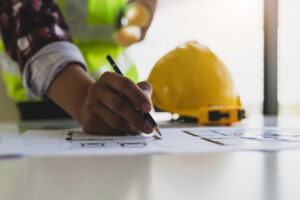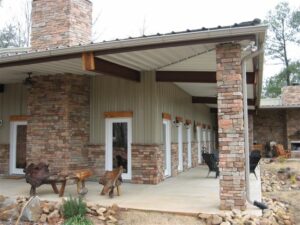Steel buildings have become increasingly popular in recent years due to their durability, versatility, and cost-effectiveness. In 2021, structural steel framing was fabricated and erected for more than 18,000 buildings, bridges, and industrial facilities. (Mordor)
After a 2.6% decline in 2022, US steel use bounced back by 1.3% in 2023 and is expected to grow again by 2.5% through 2024.
So, whether you’re planning to construct a warehouse, garage, or even a residential property, this step-by-step guide will provide you with all the information you need to successfully build a steel building from start to finish.
Table of Contents:
- Understanding the Basics of Steel Buildings
- Gathering Necessary Materials and Tools
- Preparing the Construction Site
- Laying the Foundation
- Erecting the Steel Frame
- Conclusion
- Frequently Asked Questions
Understanding the Basics of Steel Buildings
Before diving into the construction process, it’s essential to have a solid understanding of the basics of steel buildings. These structures are made primarily of steel, and offer numerous advantages over traditional building materials such as wood or concrete.
Steel is a versatile and durable material that has been increasingly popular in construction due to its strength and sustainability. They are known for their structural integrity and ability to withstand harsh environmental conditions.
The use of steel in construction provides a high strength-to-weight ratio, making it an ideal choice for facilities that require large open spaces and minimal support columns.
Additionally, steel facilities are highly customizable, allowing for unique architectural designs and efficient use of space.
Types of Steel Buildings
They come in a variety of types, each designed to suit specific needs and requirements. The most common types include:
- Agricultural buildings
- Commercial buildings
- Industrial buildings
- Residential buildings
Benefits of Steel Buildings
There are several notable benefits to choosing steel as the primary material for your building:
- Durability: Steel is incredibly strong and resistant to various elements, including fire, pests, and extreme weather conditions.
- Cost-effectiveness: They are generally more affordable to construct and maintain compared to traditional buildings.
- Customization: They offer flexibility in design and can be easily modified or expanded in the future.
- Eco-friendly: Steel is a sustainable material that can be recycled, reducing its environmental impact.
Furthermore, steel buildings are known for their energy efficiency, as steel is a good conductor of heat, allowing for better temperature regulation within the structure. This can lead to lower energy costs over time and a more comfortable indoor environment for occupants.
The versatility of steel also allows for faster construction times, reducing labor costs and overall project timelines.
Check out: Exploring The Versatility Of Prefabricated Steel Buildings For Investors
Gathering Necessary Materials and Tools
Once you have a clear understanding of steel buildings and their benefits, it’s time to gather the necessary materials and tools for the construction process. Planning and ensuring you have all the required items will streamline the building process and help you avoid unnecessary delays.
Before diving into the construction of a steel building, it’s essential to consider the foundation requirements. Depending on the size and design of the structure, you may need to gather materials such as concrete, rebar, and formwork to create a stable and durable foundation.
Properly preparing the foundation is crucial for the structural integrity and longevity.
Essential Materials for Steel Building Construction
To ensure a smooth building process, it’s crucial to have all the necessary materials on hand. Some essential materials include:
- Structural steel beams and columns
- Steel roof and wall panels
- Fasteners and anchors
- Insulation materials
Additionally, considering factors such as weather resistance and energy efficiency, selecting the right type of insulation material is key. Options range from traditional fiberglass insulation to newer, more advanced materials like spray foam insulation, offering improved thermal performance and moisture control.
Must-Have Tools for the Job
Equipping yourself with the right tools will make the building process more efficient and effective. Here are some must-have tools:
- Power tools (drills, grinders, etc.)
- Measuring tools (tape measure, level, etc.)
- Welding equipment
- Safety gear (gloves, safety glasses, etc.)
When it comes to welding equipment, having a reliable welding machine suitable for working with steel is essential. Whether it’s stick welding for structural connections or MIG welding for attaching metal panels, investing in quality welding equipment will ensure strong and durable bonds in your steel facility construction.
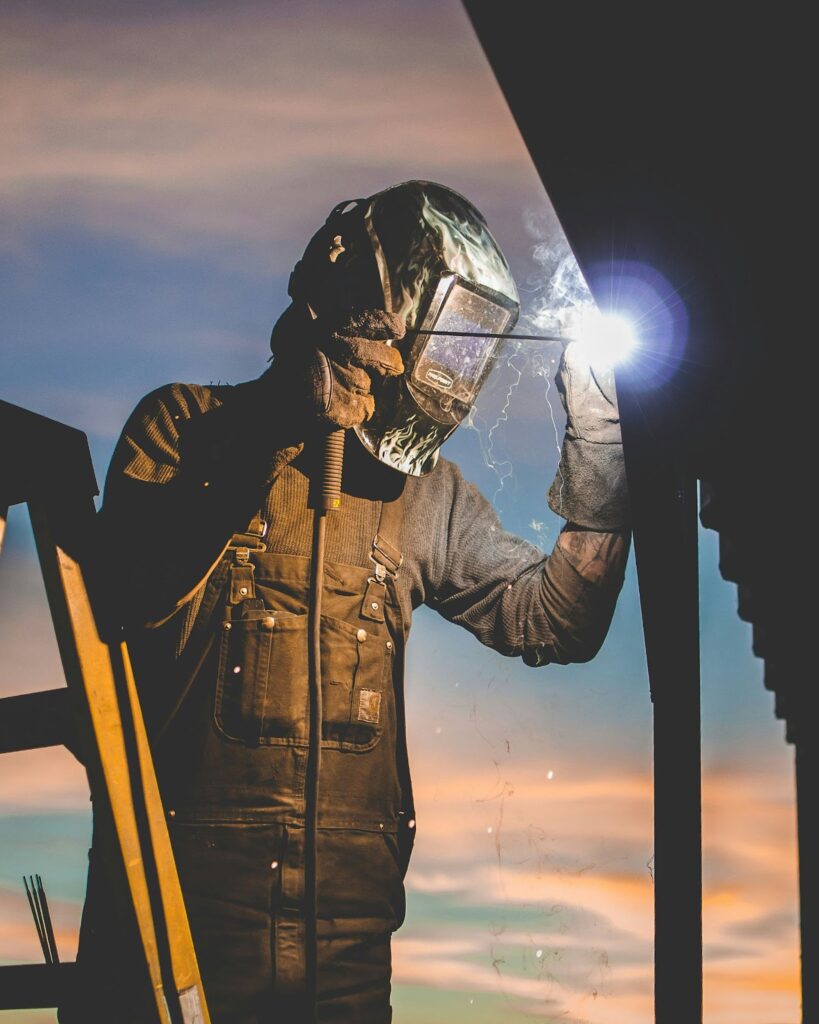
Preparing the Construction Site
With the materials and tools ready, it’s time to prepare the construction site for building your steel structure.
Before diving into the construction process, it is essential to understand the significance of proper site preparation.
A well-prepared construction site sets the stage for a successful project, ensuring the structural integrity and longevity of your steel building.
Site Selection and Evaluation
Choosing the right location for your steel building is crucial for its long-term stability and functionality. Consider factors such as accessibility, drainage, and utility connections when evaluating potential sites.
Accessibility is key not only for construction purposes but also for the future use of the building. Adequate drainage is essential to prevent water accumulation, which can compromise the integrity of the structure over time.
Additionally, evaluating utility connections such as electricity, water, and sewage ensures that your steel building can efficiently meet its operational needs.
Ground Preparation Techniques
Prepare the ground by removing any obstacles, leveling the surface, and compacting the soil. This will provide a stable foundation for your steel building.
Obstacles such as rocks, debris, and vegetation must be cleared to create a smooth and even surface for construction. Properly leveling the ground not only aids in the structural stability of the building but also facilitates construction processes such as laying the foundation and erecting the steel framework.
Compacting the soil is crucial to prevent settling and shifting of the structure over time, ensuring a durable and secure foundation for your steel building.
Pro tip:
Successful ground preparation is essential for any construction project, and soil stabilization plays a key role in this process. When dealing with sandy soils, it’s common to use additives such as lime or cement to enhance their strength. Granular soils may necessitate mechanical compaction techniques.
Laying the Foundation
The foundation is the backbone of any construction project, and building a strong foundation for your steel structure is essential. Before embarking on the construction of a steel building, it is crucial to understand the significance of a well-built foundation.
A solid foundation not only supports the weight of the structure but also ensures its longevity and stability over time.
When it comes to steel structures, the foundation plays a critical role in distributing the load of the building evenly to the ground below. This distribution of weight helps prevent settlement and ensures that the structure remains structurally sound for years to come.
Importance of a Strong Foundation
A strong foundation provides stability and ensures that your steel building can withstand various loads and environmental conditions. In addition to supporting the structural integrity of the building, a well-designed foundation can also help mitigate potential issues such as settling, shifting, or structural failure.
Properly constructed foundations are especially crucial for steel buildings, as they are typically lightweight structures that rely on the foundation to anchor them securely to the ground.
Without a strong foundation, a steel building may be susceptible to movement or even collapse under certain conditions.
Steps to Pouring a Concrete Foundation
Pouring a concrete foundation involves several steps:
- Excavate the area and set up formwork
- Place reinforcement bars
- Pour and level the concrete
- Cure and protect the concrete
Each step in the process is crucial to ensuring the strength and durability of the foundation. Excavating the area and setting up formwork provide the necessary structure for the concrete to be poured into while placing reinforcement bars helps reinforce the concrete and prevent cracking.
Pouring and leveling the concrete must be done with precision to ensure a smooth and even foundation surface, and curing and protecting the concrete is essential for allowing it to reach its full strength and durability.
Erecting the Steel Frame
Now it’s time to begin assembling and erecting the steel frame of your building. This crucial step forms the skeleton of your structure, providing the support and framework for the entire building.
Before diving into the assembly process, it’s essential to understand the intricacies of steel frame construction. Steel frames offer durability, strength, and versatility, making them a popular choice for various construction projects, from warehouses to commercial facilities.
Safety Measures During Frame Erection
Prioritize safety during the frame erection process by wearing appropriate safety gear, following safety guidelines, and ensuring a safe working environment.
Remember, safety should always be the top priority on any construction site to prevent accidents and ensure a smooth building process.
Additionally, conducting a thorough safety briefing with all workers involved in the steel frame assembly can help address potential hazards and promote a culture of safety awareness.
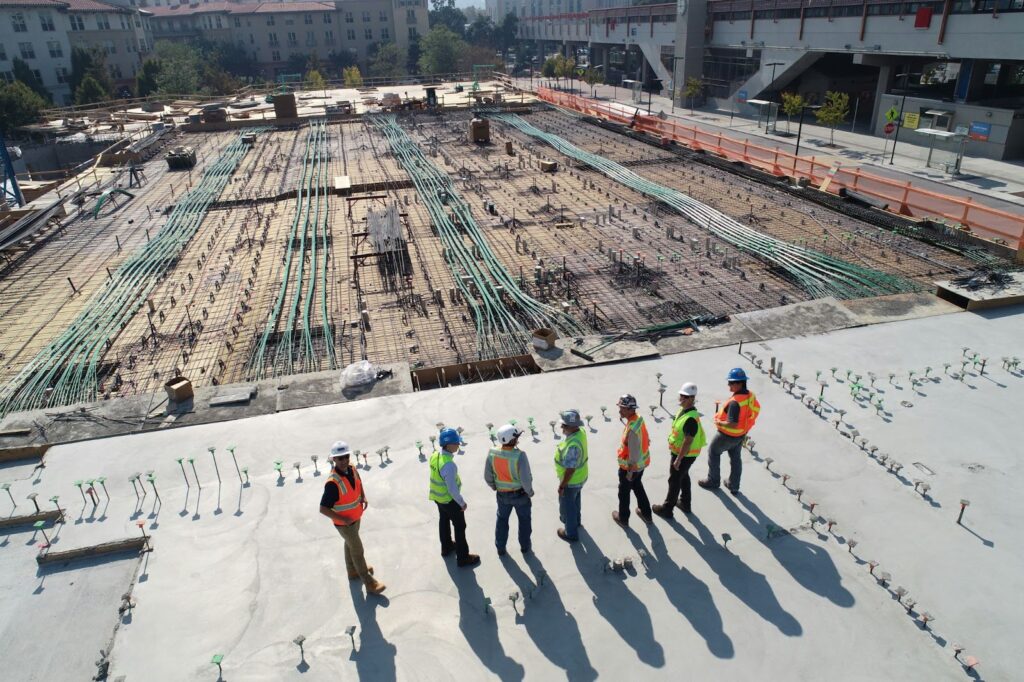
Process of Assembling the Steel Frame
Assembling the steel frame involves several steps that require precision and attention to detail to ensure a sturdy and reliable structure:
- Prepare the base plates: The foundation of your steel frame, base plates provide stability and support for the columns.
- Assemble the columns: Erect the vertical columns, which will bear the load of the building and support the roof and walls.
- Connect the columns and beams: Secure the beams to the columns, creating a rigid framework that can withstand various loads and forces.
- Install roof and wall panels: Complete the frame by adding roof and wall panels, enclosing the structure, and providing protection from the elements.
Each step in the assembly process plays a crucial role in ensuring the structural integrity and longevity of your building. Attention to detail and adherence to manufacturer guidelines are key to a successful construction project.
Conclusion
Building a steel structure demands meticulous planning, quality materials, and skilled execution. By following this comprehensive guide and seeking assistance from professionals when needed, you can embark on your construction project with confidence. Remember, safety is paramount throughout every stage of the process to create a secure and reliable building.
SteelCo has 23+ years of experience dropshipping prefabricated metal building materials nationwide and a combined 100+ years of team experience in PEMB buildings. Our team of experts from Project Support Specialists and Sales Consultants, to our in-house Designer, Architect, and more ensures you have the necessary customizable steel building kits to construct your ideal building with industry-leading turnaround times and service.
We deliver custom prefab steel structures tailored to your needs, including steel panels, framing, roofing, and other material requirements. We work with suppliers who comply with industry standards such as the MBMA, AISC, and AISI, ensuring that you receive top-quality steel materials for your project. Learn more about our comprehensive services.
————–
Frequently Asked Questions
Is it cheaper to build with steel?
When constructing new buildings, approximately 20% of the total cost is allocated to framing and trusses. Despite the common belief that it would be significantly more expensive, steel framing costs only about 5% more than wood trusses.
The installation of steel structures or metal buildings typically results in labor cost reductions of up to 50% compared to wood construction, thanks to the faster and easier installation process of metal trusses.
What is the cheapest foundation for a steel building?
The most affordable foundation option is typically a floating slab, also known as a slab on grade. This type of foundation involves a simple concrete slab that is poured directly onto the ground.
How long does it take to build a steel building?
The construction timeline depends on various factors such as the size, complexity, and location of the project. In general, simple projects can be completed from quote to installation/construction in as little as 8-10 weeks, and 16-18 weeks for more complex projects.
What’s the cost of erecting a steel building?
Generally, you can expect to pay between $6 and $10 per square foot to erect a steel building and approximately $110 to $150 per sq ft for the full construction cost (including materials, interior build-out, and construction) for “small” projects under 100,000 square feet. For 200,000 SF projects and up, cost per square foot can start to reduce significantly.
—————-
Check out these related articles:
> Selecting The Best Paint For Steel Buildings
> Navigating Financing Options For Steel Building Projects

